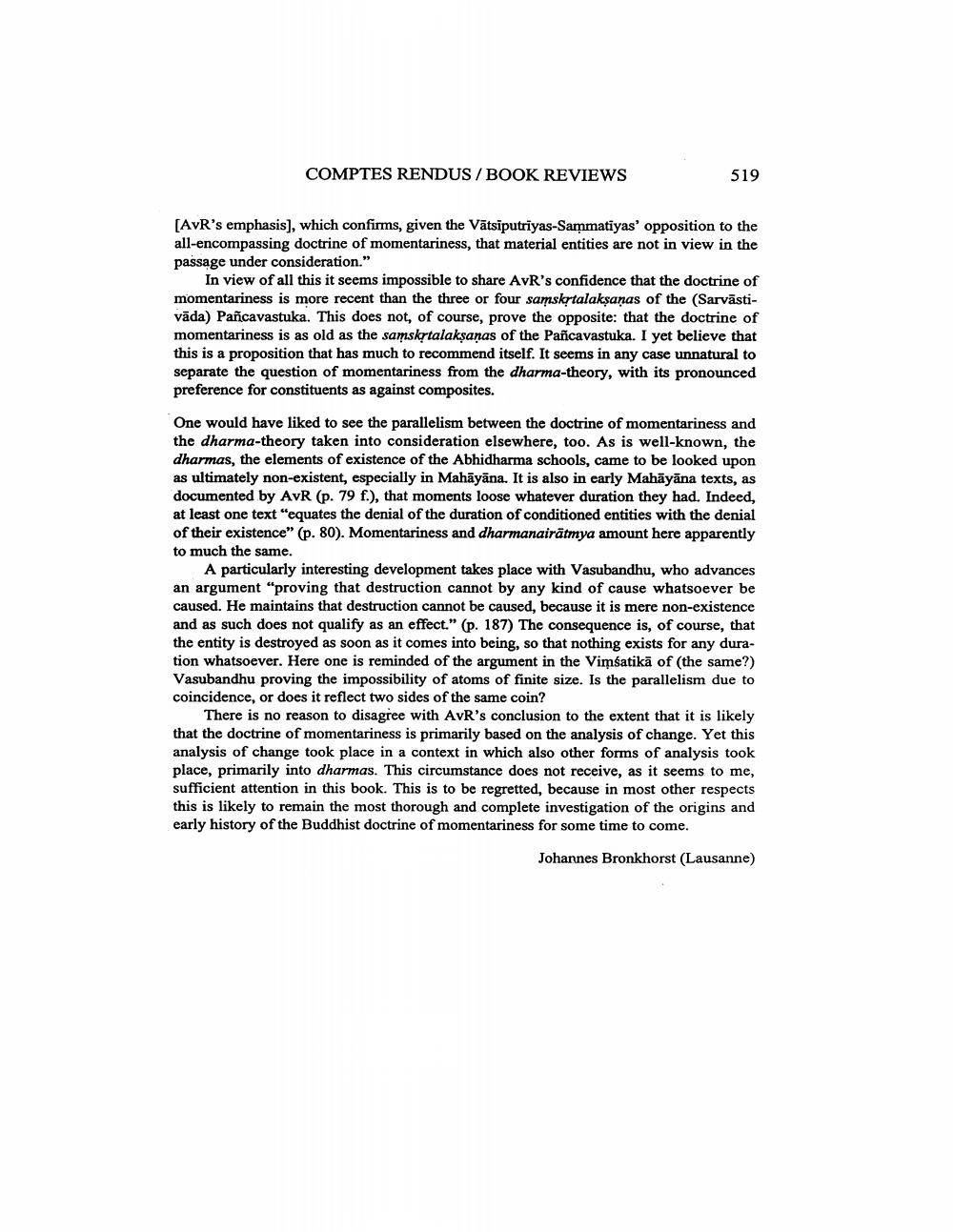Book Title: Buchbesprechungen Comptes Rendus Book Reviews Author(s): Peter Schreiner Publisher: Peter Schreiner View full book textPage 7
________________ COMPTES RENDUS / BOOK REVIEWS 519 [AVR's emphasis), which confirms, given the Vātsiputriyas-Sammatiyas' opposition to the all-encompassing doctrine of momentariness, that material entities are not in view in the passage under consideration." In view of all this it seems impossible to share AvR's confidence that the doctrine of momentariness is more recent than the three or four samskrtalaksanas of the (Sarvāstivāda) Pañcavastuka. This does not, of course, prove the opposite: that the doctrine of momentariness is as old as the samskytalaksanas of the Pancavastuka. I yet believe that this is a proposition that has much to recommend itself. It seems in any case unnatural to separate the question of momentariness from the dharma-theory, with its pronounced preference for constituents as against composites. One would have liked to see the parallelism between the doctrine of momentariness and the dharma-theory taken into consideration elsewhere, too. As is well-known, the dharmas, the elements of existence of the Abhidharma schools, came to be looked upon as ultimately non-existent, especially in Mahāyāna. It is also in early Mahāyāna texts, as documented by AvR (p. 79 f.), that moments loose whatever duration they had. Indeed, at least one text "equates the denial of the duration of conditioned entities with the denial of their existence" (p. 80). Momentariness and dharmanairātmya amount here apparently to much the same. A particularly interesting development takes place with Vasubandhu, who advances an argument "proving that destruction cannot by any kind of cause whatsoever be caused. He maintains that destruction cannot be caused, because it is mere non-existence and as such does not qualify as an effect." (p. 187) The consequence is, of course, that the entity is destroyed as soon as it comes into being, so that nothing exists for any duration whatsoever. Here one is reminded of the argument in the Vimsatikā of (the same?) Vasubandhu proving the impossibility of atoms of finite size. Is the parallelism due to coincidence, or does it reflect two sides of the same coin? There is no reason to disagree with AvR's conclusion to the extent that it is likely that the doctrine of momentariness is primarily based on the analysis of change. Yet this analysis of change took place in a context in which also other forms of analysis took place, primarily into dharmas. This circumstance does not receive, as it seems to me, sufficient attention in this book. This is to be regretted, because in most other respects this is likely to remain the most thorough and complete investigation of the origins and early history of the Buddhist doctrine of momentariness for some time to come. Johannes Bronkhorst (Lausanne)Page Navigation
1 ... 5 6 7 8
